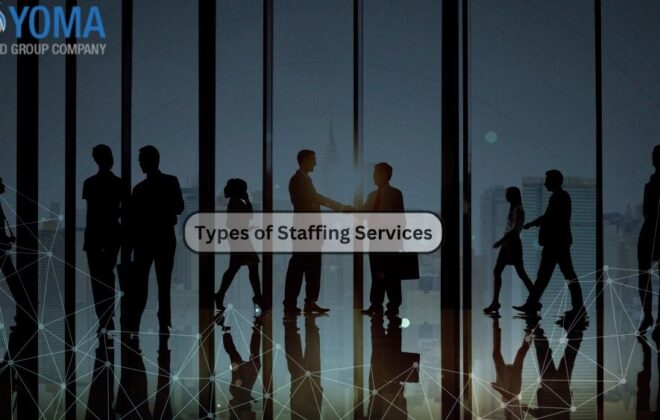
What is Employee Retention?

Introduction
Times have changed a lot, and so has the way of doing business; companies are realizing that their most valuable asset is not their products or services but rather their employees. Employee retention has become an extremely important factor, as loyal and dedicated employees are the ones who enhance the growth trajectory of a company. Let’s dive into the importance of employee retention and explore effective strategies to strengthen it.
What is the Importance of Employee Retention?
Employee retention, as the phrase itself suggests, relates to a company’s capacity to maintain its workforce over a specified period. It is a key metric that indicates the stability and health of a company’s work environment. Here are some compelling reasons why employee retention should be a top priority for businesses:
• Cost-Effectiveness: The cost of general staffing, training, and onboarding new employees is considerably higher than retaining existing ones. By having skilled and experienced employees, businesses can result in significant long-term financial savings.
• Organizational Knowledge: Long-term employees accumulate valuable institutional knowledge, industry insights, and company-specific expertise. Losing these employees means losing a repository of critical information that can impact decision-making and problem-solving.
• Productivity and Performance: Employees who stay with a company for an extended period tend to be more familiar with their roles and responsibilities. This leads to improved productivity and higher performance levels as they become more proficient over time.
Let us talk about what happens when Employees have a high turnover rate- High Employee Turnover Rate is a no-no for Success.
• Disrupted Productivity: Every time there is a new Joining, the whole process of onboarding, training, and getting them acquainted with the company takes time, thus disrupting the productivity for that time.
• Decreased Employee Morale: Frequent employee departures lead to lowered morale as the remaining employees feel uncertain about their position and career growth in the company. They might also find the increased workload undue and feel resentful towards the company.
• Negative Impact on Company Culture: A revolving door of employees can erode the company’s culture and sense of community, making it difficult to maintain a consistent and positive work environment.
• Disrupted Services and Dissatisfied Customers: High turnover leads to disrupted services for the customers as new employees may take some time to pick up from where the previous employee has left.
Employee Retention Models
• The Hierarchy of Needs: The theory was proposed in 1943 by Abraham Marsh low, for managing employee retention, who put the needs of a human being in sequential order, starting from food, shelter, and safety to love self-esteem with Self-actualization at the top. It is said that a satisfied individual will have all these needs fulfilled. These can also contribute to measuring the level of job satisfaction of an employee.
• Motivation-Hygiene Theory: The Motivation-Hygiene Theory or the Two-factor theory was curated by psychologist Frederick Herzberg in the 1950s. According to him, an employee in a workplace is satisfied by two things: Hygiene, which encompasses salary, working conditions, job security, workplace environment, etc., and motivators, which include rewards, recognition, increments, growth opportunities, etc.
• Human Motivation Theory: This theory is based on the book “The Achieving Society” written by psychologist David McClelland, built on Maslow’s work, The book explores the three intrinsic factors that motivate an employee, the factors being Achievement, Power, and Affliction. A company must figure out which of the three resonates with an employee and retain them based on this.
• Job Characteristic Model: The model was penned by Hackman and Oldham in the 1970s; it focuses on understanding how a job can impact individuals’ motivation, satisfaction, and level of understanding. The model identifies core job characteristics that involve a variety of skills, task significance, task identity, autonomy, and feedback. What are the motivating factors of an employee.
8 Unique Ideas for Managing Employee Retention
Let us take a look at the most effective employee retention strategies:
Competitive Compensation and Benefits: The Top Recruitment Agencies in India must ensure that the employees are being compensated fairly according to industry standards. Offer perks, including retirement plans, health insurance, and flexible work arrangements that align with their needs and work as a great strategy for Employee retention.
1. Opportunities for Growth: Implementing clear career paths and providing opportunities for skill development and advancement within the organization is very important. Employees are more likely to stay when they see a concise trajectory for their professional growth.
2. Recognition and Appreciation: Regularly recognize and appreciate employees for their contributions. A simple “thank you,” or public acknowledgment can go a long way in boosting morale and job satisfaction, ensuring that you retain your employee.
3. Work-Life Balance: To support a positive work-life balance, if available, remote job opportunities and flexible hours are feasible. Respect for personal time enhances job satisfaction and reduces burnout and, thus, a satisfied employee.
4. Meaningful Work: Make sure employees find their work meaningful and aligned with their passions. When employees believe that their contributions matter, They are more likely to contribute whole-heartedly to the company.
5. Effective Leadership and Communication: Strong leadership that listens, communicates transparently, and values employee input creates a positive work environment. Regular feedback sessions help address concerns, improve overall job satisfaction, and increase employee retention.
6. Employee Wellness Programs: Invest in wellness programs that promote physical and mental health. These initiatives demonstrate a genuine concern for employee well-being and can significantly contribute to retention.
7. Inclusive and Diverse Environment: Foster an inclusive place of work where employees from diverse backgrounds feel valued and respected. A diverse workforce can contribute to innovative ideas and perspectives and, in turn, make the company’s growth trajectory more prominent.
8. Mentorship and Coaching: Implement mentorship or coaching programs where experienced employees can guide newer ones. This helps in skill development, knowledge transfer, and fostering a sense of camaraderie among team members.
But sometimes, even after employing Employee Retention Strategies, the employees leave due to various reasons that may include better opportunities, personal reasons, etc. A company can tell beforehand if an employer is thinking of going through these tell-tale signs and take proactive measures.
Top 6 Benefits of Employee Retention
1. Deteriorating Performance: A sudden decline in an employee’s performance could be a sign of disengagement or dissatisfaction.
2. Decreased Enthusiasm: If an employee who was once excited about their work becomes consistently disinterested, it may signal that they’re ready to move on.
3. Increased Absenteeism: Frequent absences or a surge in sick days could indicate a lack of motivation to come to work.
4. Reduced Interaction: Employees who start to withdraw from team activities, meetings, and social interactions may be mentally disengaging from the company.
5. Lack of Initiative: A drop in taking on new projects, suggesting ideas, or seeking growth opportunities might indicate an employee has lost interest.
6. Sudden Interest in Training: If an employee suddenly expresses interest in training, courses, or certifications, they might be preparing for a job change.
What is Staff Retention in Business?
A company must keep a track record of its employees and analyse the data for any potential red flags. The key calculations include Key metrics like Retention Rate(employees remaining in the company over a specific period) and turnover rate(employees leaving the company over a particular period of time). These can help calculate turnover cost or identify potential reasons for employee turnover. This data can be broken down based on departments, time frames, brands, etc.
A company must also apply measures like conducting exit interview surveys and understanding the problems that the employees are facing. These surveys can help understand what are the potential reasons behind an employee leaving a company. The major factors can be eliminated to create a better workplace experience for the employees.
Timely compensations and motivating factors like awards or recognition based on performance are also necessary, a proper and elaborate report of each employee’s performance should be made.
By combining quantitative and qualitative data, organizations can gain a comprehensive understanding of their employee retention landscape. This information allows them to proactively address potential concerns, create targeted retention strategies, and foster a work environment that encourages long-term commitment and job satisfaction.
What is Staff Retention in Business Through HR Software?
Nowadays, there are many HR softwares available that help in keeping tabs on numbers like attendance, and performance. It also helps analyze the pivotal employee retention metrics with ease. The extensive calculation and metric formulation can be done with ease through this HR softwares.
It helps formulate extensive reports by highlighting the metrics or reasons that are responsible. The automation of administrative tasks and easy report formation leaves the HR teams to focus on more strategic initiatives, such as designing personalized career paths, fostering a culture of continuous learning, and implementing targeted recognition programs.
Ultimately, HR Managed Services empowers organizations to create a more efficient, responsive, and employee-centric environment, contributing significantly to the enhancement of employee retention rates and overall workforce satisfaction.
Conclusion
In this ever-changing, competitive business landscape, employee retention isn’t just a feel-good concept; it’s a strategic imperative. The benefits of retaining a skilled and engaged workforce extend far beyond financial savings. Companies that prioritize employee retention strategies are better positioned to foster a positive culture, achieve long-term growth, and establish themselves as employers of choice within their industry.
By implementing thoughtful strategies that prioritize employee well-being, growth, and appreciation, organizations can create an environment where employees thrive and are motivated to stay for the long haul. This, in turn, benefits the company itself as it is able to retain its most valuable asset, “Employees,” for a long period of time.
Related Posts





